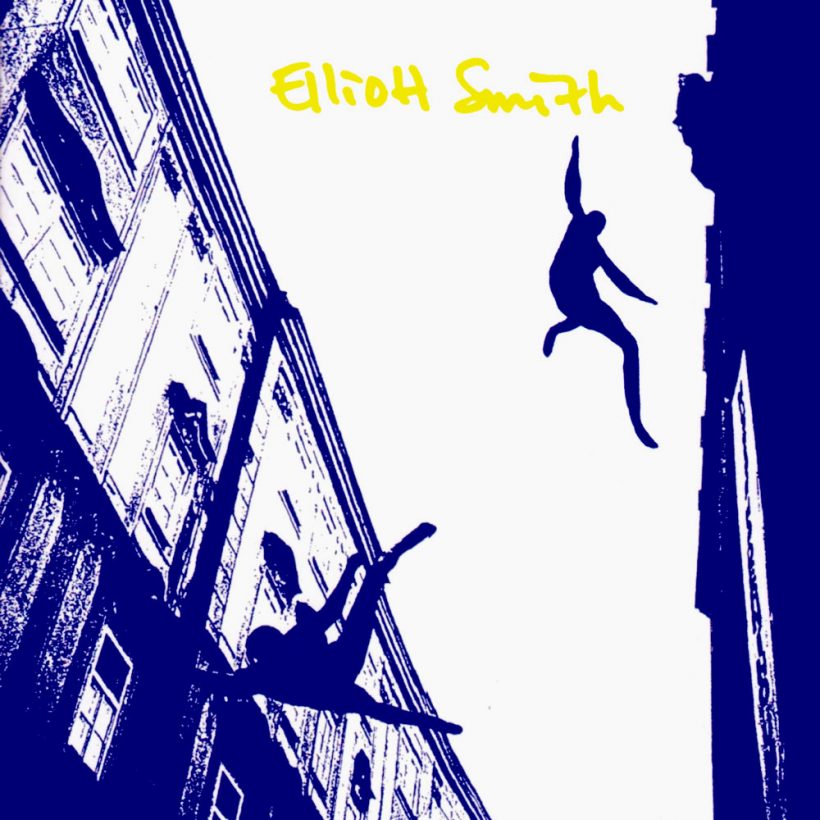The Heartbreaking Beauty Behind Elliott Smith’s Self-Titled Album
Elliott Smith’s self-titled album remains both a comforting and disquieting piece of art and an essential statement from an acknowledged genius.

In 1995, Elliott Smith did the unthinkable: he released an intimate, eloquent, stripped-down folk album seeded with references to alcoholism, depression, and suicide. As if the songwriting weren’t brilliant enough on its own, Elliott Smith’s self-titled second album would eventually become hailed as an essential early statement from an acknowledged genius.
Released on July 21, 1995, Elliott Smith initially came and went without much fanfare, going up against the early 90s alt-rock gold rush of the Pacific Northwest. Bands like Foo Fighters, Green Day, Live, and Seven Mary Three dominated the charts with their different takes on the same aggressive electric formula. Smith’s confessional statements offered some relief from the onslaught.
“I knew there was something special”
During the recording of the album, Smith pulled double-duty between his burgeoning solo career and his indie rock band, Heatmiser, scraping together a living working odd jobs. He befriended singer-songwriter Mary Lou Lord, who had caught his set at the legendary Seattle venue Velvet Elvis. Lord was floored by Smith’s performance and asked him to join her on a month-long tour. During this time, Smith played Lord a new song, “Needle in the Hay,” which would become his self-titled album’s opening track. Lord was in awe of the recording’s quality, musical arrangements, and lyrical content.
“I was so impressed with the sound,” she said in a 2015 interview with Consequence Of Sound. “It was lo-fi, sure, but you could tell there was a lot of thought that went into the texture of the way these songs were sounding. I knew there was something special in the production and the sonic capability of this very primitive way of recording. It was staggering.”
A latter-day Nick Drake
Elliott Smith creates an inverted sonic landscape where sparse, paper-thin drums eat away at the edges of layered, melodic down-tuned acoustic guitar reminiscent of Nick Drake, Bert Jansch and John Fahey. Electric guitar lines fly in and out, while Smith’s vocals are confessional whispers demanding that listeners show up for the music and participate.
Lord introduced Smith to her boyfriend at the time, Slim Moon, owner of record label Kill Rock Stars, who would go on to release Elliott Smith and its follow-up, Either/Or, before Smith signed to DreamWorks in 1998. The album’s recording was divided between the home studios of Heatmiser’s drummer (Smith’s longtime high-school friend Tony Lash) and local audio engineer Leslie Uppinghouse, both of whom are credited on the album with “mixing assistance”.
His most intimate and revealing record
To this day, many consider Elliott Smith’s self-titled album to be the late singer-songwriter’s most intimate and revealing record. Yet even as Smith alludes to some darker tendencies on songs like “Needle In The Hay,” “St Ides Heaven” and “The White Lady Loves You More,” his keen sense for observational details and impeccable songwriting prevent them from sounding like hopeless dirges.
Nikolas Rossi, director of the 2015 Smith documentary, Heaven Adores You, said that Smith was “incredibly funny, witty, well-read and extraordinarily generous”. “We found so much about him that was able to balance out the perceptions of him being such a downer,” he revealed. “It was cool to find so many photographs of him having a good time.”
Despite the speculation surrounding Smith’s lyrics, the singer wasn’t under the influence of drugs or even heavy alcohol consumption during the album’s creation. Like so many cult figures, Smith’s emotionally poignant songwriting blurred the line between reality and artifice, leaving it open to interpretation.
Even as most of Elliott Smith sees the singer bare his soul over hushed tones and intricate guitars, his raw emotions spill out on songs like “Christian Brothers.” Originally arranged as a Heatmiser song, Smith channels his rage throughout the track, exposing a level of repressed intensity that’s ever-present. It was later covered by Queens Of The Stone Age in 2007.
Beauty in simplicity
One of the most impressive aspects of Smith as an artist was how much he could accomplish with such simple-seeming arrangements. At first listen, a track like “Good To Go” sounds straightforward, but it’s rife with overdubs, tight harmonies, and unique chord structures that generally go unnoticed.
Elliott Smith is bookended by two of the singer-songwriter’s most heart-rending compositions, “Needle In The Hay” and “The Biggest Lie.” There is both a beautiful sense of fragility and a nagging sense of disease to the latter, as if Smith were foreshadowing his tragic future. When he sings, “I’m tired of dancing on a pot of gold flake paint,” he taps into the weight of wearing the mask we all wear from time to time.
It would take a few more years for the rest of the world to discover Elliott Smith. In 1997, “Miss Misery” was featured on the soundtrack for Good Will Hunting and garnered an Oscar nomination, while filmmaker Wes Anderson would go on to use “Needle in the Hay” in his 2001 film, The Royal Tenenbaums. 1998’s XO would be the first of Smith’s albums to enter the chart.
Smith grew as an artist over the course of his career and released a further four studio albums before his tragic passing, in 2003, at the age of 34. Posthumously, his once overlooked second album became lauded by critics as being a landmark release in a brilliant career cut too short.











Pallymac
July 22, 2023 at 9:06 pm
Elliott Smith has been my favourite artist since a college pal showed me Roman Candle, not too long after Figure 8 had been released. It was a great time playing catch up, and just awful when I got a call telling me he’d died.
That all being said: how was Elliott Smith writing and releasing his second album doing “the unthinkable”?